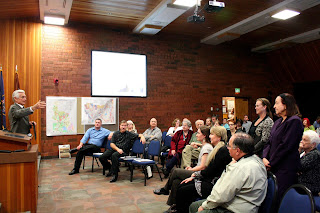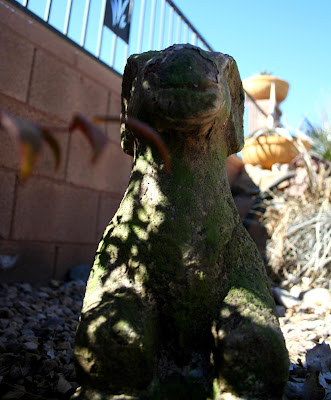Upon listening to the podcast and reading the post I realized I too have fallen into the trap of spreading misinformation. I was notified mere seconds about the bombings in Boston thanks to my Twitter feed. At first I was terrified for the innocent people involved in the horrific situation. I was constantly on my Twitter feed the next few hours. Even checking my phone during class for new updates. When I got to my internship that afternoon I started discussing the bombings with those attending the team meeting. We started talking about how many bombs there were, whether it was a terrorist attack, and I had just learned there was a third bomb that went off in a library (which turned out to be unrelated). Our leader hadn't heard of the bombings yet and all of us started sharing the details we knew.
Reflecting back to those few hours, I realize now what I was doing was nothing better than gossip. Sharing facts with other that may or may not be true from sources from a Twitter feed. In fact, I also got a thrill from sharing information they didn't have. It was like the shiny new toy that a toddler wants to show off. It turns out a lot of the information I received in the early hours was incorrect, yet it was too late to take back what I had passed on. This insatiable need to have the information first, to share it first comes from the ever changing culture surrounding us. For some reason, if we're first were the best.
These news organizations receive the information so quickly and disseminate it before verification because the audience will not tolerate having the information second. If one channel is receiving information about a major event more quickly than the other then the audience will most likely switch channels. Viewers equal survival, and in order to keep viewers they must have the information first. Social media has only perpetuated this.
Convenience of cell phones causes people to be constantly plugged in. Refreshing pages and feeds are a constant of everyday life. Sharing, retweeting can bring information from one network to another within seconds. People have access to virtually unlimited information at the touch of a finger, and they want speed. Social media has perpetuated this norm of needing information immediately when desired, and in order to meet the needs of their audience, news organizations must adapt.
That evening when I was watching a few different channels covering the bombings I noticed a theme across many of them. When a new piece of information about the bombings arises it is quickly disseminated usually with "our (insert news organization here) has not verified this fact yet, but it looks like..." and then it leads into some sort of speculation. Because of these facts it looks like this. These are the kind of "sin licenses" that are not in congruence with the ethics of journalism. For example, when the bombers were identified by the FBI, and several channels gathered information about their country of origin and immediately started speculating extremist ties because of the history of region. However, they did not know this for a fact it is purely speculation. When I was taught journalistic procedure speculation was not a part of it. However, much of the populace may believe it to be true because the news presents it.
Maybe the problem does not lie in the news organizations themselves, but in the people. All of us included.
Tuesday, April 30, 2013
Monday, April 15, 2013
Feature News
For my feature story I decided to explore the topic of Native American petroglyphs/pictographs, and the historical significance of them to the area. Destruction and preservation of these historical markers have been an ongoing issue and debate for years.
These petroglyphs are located a short hike from where I grew up, and their whereabouts has been well-known causing trails and markings to appear. The petroglyphs are in fact on BLM land and therefore considered public land and use.
Monday, March 25, 2013
Tuesday, February 26, 2013
Portraits
Glamour lighting.
ISO 100, f/5.6, 55 mm
(Since I was using my short zoom I had to crop the picture in post.)
Glamour lighting. 100 mm
The rest of the portraits were taken at 100 mm. I definitely noticed a difference in the shots as the longer zoom does slenderize and flatter the face a lot better.
Glamour.
Split lighting.
Glamour.
My experience in front of the camera was definitely different. I kept thinking, "So this is what a movie star feels like?" I personally hate being in front of the camera because I am now the center of attention. I suddenly became aware of every limb and wondering what the heck I was supposed to do with them plus facial expressions. I would much rather be behind-the-scenes but it was good just to have the experience.
Thursday, February 14, 2013
Valentine's Day
Shooting Tight
I realize that I much prefer shooting tight to shooting wide. Tight shots bring the viewer much closer to the subject in the frame. A cultural and psychological context can be established in close shots that bring an element of drama to the frame. I decided to shoot this old statue I have that's seen better days. Shooting tight brings out texture, color, and contrast that wouldn't be present in a wide shot. These tight shots brings us into a more intimate mindset when viewing this statue. Even temporal contexts could be established when the different sorts of wear is present in great detail on the statue. How long has it been there? How old is it? would be questions brought to mind.
Wednesday, February 6, 2013
Shooting Wide
A few days ago unsuspecting me was driving down the street in eager search for something to shoot for this assignment. Out of the corner of my eye I caught this man literally dumpster diving in front of this small apartment complex not far from the Temple. Thinking it might be a decent angle for story-telling I yanked my car into a parking lot across the street and hurried my little feet over to where I saw him. Unfortunately for me he had found what he was looking for and had exited the dumpster. I discretely caught these images as he was heading away. At first I was hesitant to take the pictures for fear I would seem insensitive and using his situation for my benefit, but I tend to over analyze just about anything. I felt by shooting this wide angle it gave more context for this man's physical location. On a street in a residential neighborhood a person may not suspect to find a scene like this. I certainly didn't. Also, it gives a temporal context as being late afternoon due to the shadows created by objects in the frame. Finally, by shooting wide angle vectors can be created to draw the eye to certain points using the road, sidewalk, as well as other lines. As far as story-telling is concerned the photographs raise more economic and social questions. Does this man do this on a daily basis to help him survive? How many other individuals are subject to this?
Wednesday, January 23, 2013
Subscribe to:
Comments (Atom)











































.JPG)
.JPG)
.JPG)




